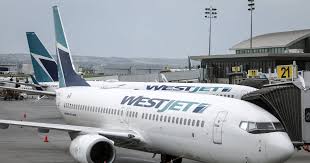WestJet Flight Delays Impacting Canada’s Airports

Introduction
Travelers across Canada have experienced significant disruptions recently due to WestJet flight delays affecting various airports. As one of the nation’s largest airlines, WestJet’s operational efficiency is crucial for maintaining punctuality and passenger satisfaction. Recent events have raised concerns about airline reliability and its impact on the holiday travel season, making it essential to understand the reasons behind these delays and their broader implications.
Recent Events
Over the past few weeks, WestJet has faced numerous delays and cancellations, particularly impacting major airports in Toronto, Vancouver, and Calgary. Reports indicate that more than 25% of WestJet flights were delayed on several occasions, aligning with a surge in travel demand as Canadians flock to airports during the fall season and approaching holiday festivities.
WestJet attributed these disruptions to a combination of operational challenges, including staffing shortages, air traffic control delays, and adverse weather conditions. The airline has also expressed its commitment to addressing these issues, promising to improve scheduling and staffing in response to a surge in bookings.
Passenger Impact
The travel disruptions have led to widespread frustration among passengers. Many have reported long wait times for customer service assistance, difficulty rebooking flights, and increased travel costs due to accommodation needs while awaiting flight rescheduling. Social media platforms have been inundated with passenger complaints, highlighting the urgent need for improved communication and support from the airline.
Future Implications
As we approach the winter months, industry analysts suggest that the pressure on airlines will only intensify. With the Christmas holidays just around the corner, demand for flights is expected to explode. This scenario poses a significant challenge not only for WestJet but for the entire Canadian airline industry, which must work to bolster their operational capacity to meet passenger requirements.
To mitigate potential disruptions, both the government and airlines are urged to find collaborative solutions to enhance overall efficiency in air travel. Possible strategies include investing in technology to streamline operations, improving employee training programs, and bolstering airport infrastructure to handle increasing passenger volumes.
Conclusion
WestJet flight delays have highlighted critical operational challenges within Canada’s airline industry, significantly impacting passenger experience and satisfaction. As the travel landscape continues to evolve amidst rising demand, addressing these issues swiftly will be essential for WestJet to restore confidence among its customers. Travelers are encouraged to stay informed about flight statuses and prepare for potential disruptions, particularly as peak travel seasons approach. Understanding the underlying causes of these delays may also prompt necessary changes to ensure a smoother travel experience in the future.









